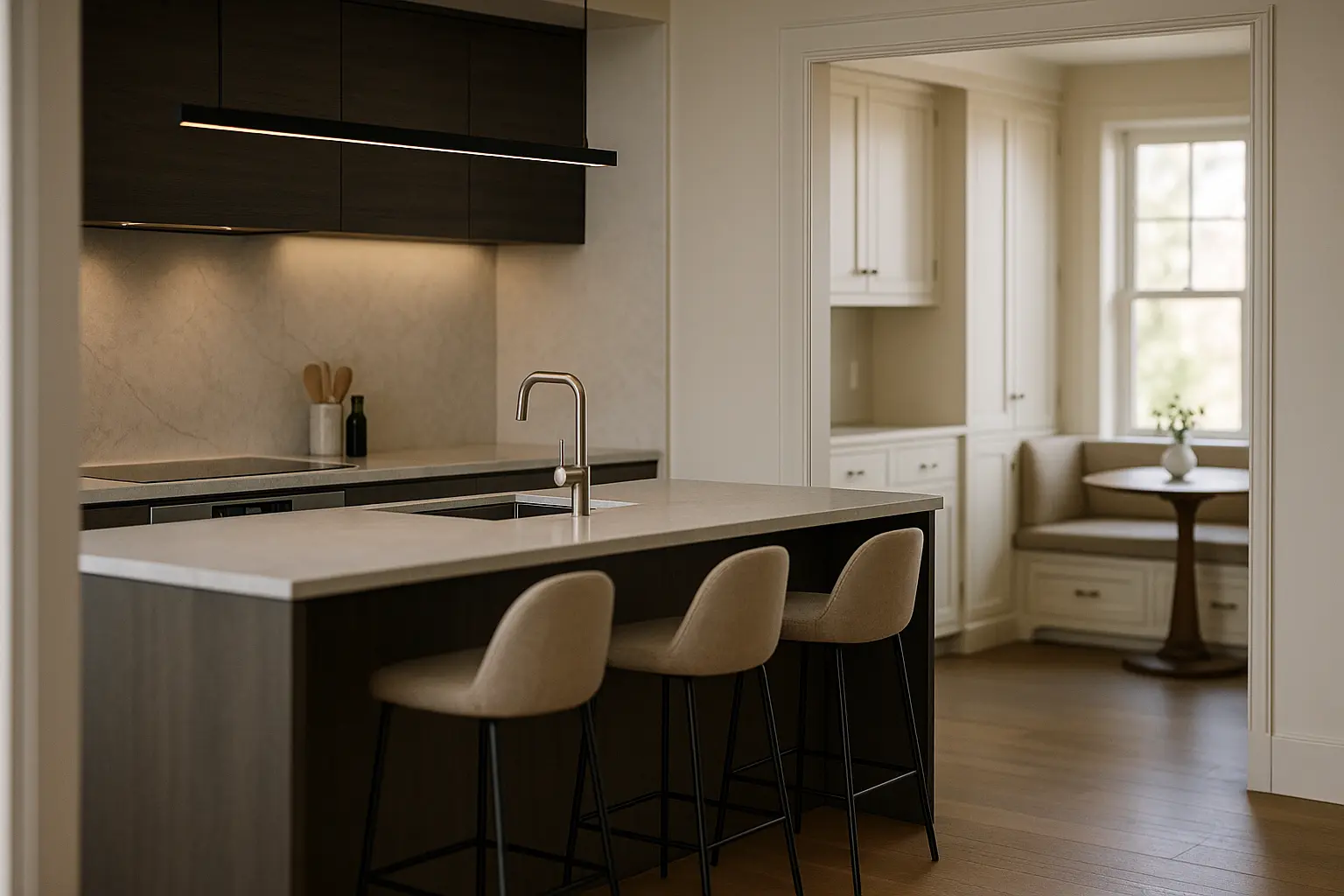In today’s ever-evolving design landscape, the kitchen is no longer just a functional space for cooking. It has emerged as one of the most pivotal areas in our homes, reflecting both our style and the way we live. As we explore the options available, we often find ourselves at a crossroads: open kitchens or closed kitchens? Each brings its own flair, advantages, and challenges. As we navigate through these choices, we aim to help you determine the best layout for your home by weighing the pros and cons of each. So, let’s embark on this journey to unravel the right kitchen concept for your lifestyle.
The Open Kitchen Layout
Open kitchens have been the darling of modern design, creating a seamless transition between the cooking area and the living spaces. This layout encourages an airy, open concept feel that is as inviting as it is functional.
The allure of an open kitchen lies in its ability to foster a sense of community. As we prepare meals, we can simultaneously engage with family and friends in the living room. This interaction blurs the boundaries between cooking and socializing, transforming the kitchen into a multi-purpose space.
Natural light is another hallmark of open kitchens. With fewer walls to block it, light floods the areas, creating a bright and welcoming atmosphere. This not only enhances the aesthetic appeal but also makes the space feel larger.
However, an open kitchen is not without its challenges. The absence of walls means that any mess is visible from the adjoining areas, necessitating a higher standard of cleanliness. Additionally, the sounds and smells of cooking can permeate the entire space. While some may find these elements add to the home’s vibrancy, others may see them as potential distractions.
In summary, the open kitchen layout is perfect for those who prioritize connectivity and a modern, airy design. It is ideal for those who entertain often or have a household that enjoys shared spaces.
The Closed Kitchen Layout
In contrast to the open kitchen, the closed kitchen is a private sanctuary—a dedicated culinary domain where we can retreat and focus on our gastronomic endeavors. This traditional layout, characterized by distinct walls and separate spaces, has its own set of compelling attributes.
Privacy is a significant advantage of closed kitchens. It allows us to enjoy uninterrupted cooking without the hustle and bustle of other household activities. With walls separating it from the rest of the home, we can escape into our own culinary world, free from distractions.
Closed kitchens offer an element of surprise and discretion. When hosting, it provides an opportunity to present a meal as a delightful reveal without guests witnessing the preparation process. Additionally, there’s minimal risk of cooking odors permeating the living areas, allowing the rest of the home to maintain its ambiance.
While some may argue that closed kitchens feel confined, they can also evoke a cozy and intimate atmosphere that some find comforting. This layout is often preferred in homes where the cook desires solitude or when the kitchen is predominantly for culinary purposes.
Despite a more traditional feel, the closed kitchen layout appeals to those who wish to maintain a clear distinction between meal preparation and leisure activities, offering a space that is both functional and private.
The Hybrid Approach: A Middle Ground
For those torn between the freedom of an open kitchen and the privacy of a closed one, the hybrid approach offers the best of both worlds. Many contemporary designers are opting for semi-open layouts, using strategic elements to balance openness with functionality.
In a hybrid kitchen, partial walls or islands serve as subtle divisions. This allows us to maintain a visual connection with the living areas while preserving some level of separation. These elements can also double as storage or additional workspaces, enhancing the kitchen’s practicality.
Incorporating sliding doors or folding screens provides flexibility, offering the option to close off the kitchen when needed. This adaptability means we can enjoy the benefits of both open and closed kitchens based on our daily needs, making it an ideal choice for modern living.
The hybrid layout also leverages the power of design to integrate the kitchen with the rest of the home. By using complementary materials and color schemes, it ensures a cohesive flow throughout the living areas, preserving aesthetic harmony.
Ultimately, the hybrid approach appeals to individuals seeking a compromise—a layout that offers connectivity when desired and privacy when required. It is a testament to the evolving needs of today’s homeowners, reflecting a desire for spaces that are both versatile and personalized.
In the quest for the perfect kitchen, we find ourselves weighing the merits of openness against the allure of privacy. Open kitchens offer an inviting space for social interactions, while closed kitchens provide a sanctuary for those who cherish solitude in culinary creativity. The hybrid kitchen, meanwhile, stands as a testament to the possibility of marrying the two concepts, offering adaptability and functionality.
As we ponder over these choices, it is essential to consider our lifestyle, preferences, and the way we envision our home. Whether seeking the vibrant hum of an open layout or the quietude of a closed space, the decision is ultimately personal and reflective of our unique living dynamics.
By understanding the benefits and challenges of each kitchen design, we empower ourselves to create a space that is not only functional but also a true extension of who we are. So, as we plan our next home renovation or embark on constructing our dream home, let us choose a kitchen layout that resonates with our heart and home.
FAQ
What are the main benefits of an open kitchen layout?
An open kitchen layout offers several advantages, including increased social interaction, as it allows family and guests to engage with the cook. It also creates a more spacious feel, making the home appear larger and more inviting.
Are there any downsides to choosing an open kitchen design?
While open kitchens promote connectivity, they can sometimes lead to increased noise levels and lack of privacy. Additionally, the open space might require more effort to keep tidy, as clutter can be easily visible from other areas of the house.
What advantages does a closed kitchen offer over an open one?
Closed kitchens provide more privacy, allowing for a peaceful cooking environment. They help contain cooking odors and noise, making it easier to maintain a serene atmosphere in the rest of the home. Plus, they offer more wall space for cabinetry and storage.
What are the possible disadvantages of a closed kitchen?
Closed kitchens can sometimes feel isolated, as they separate the cook from family or guests. This design might also make the home feel smaller and less open, and can limit natural light flow throughout the living spaces.
How can I decide between an open and closed kitchen layout for my home?
Choosing between an open and closed kitchen depends on personal preferences and lifestyle. Consider factors such as the importance of social interaction, noise tolerance, cooking habits, and how you use your kitchen space. Assessing your priorities will help determine the best layout for your needs.


